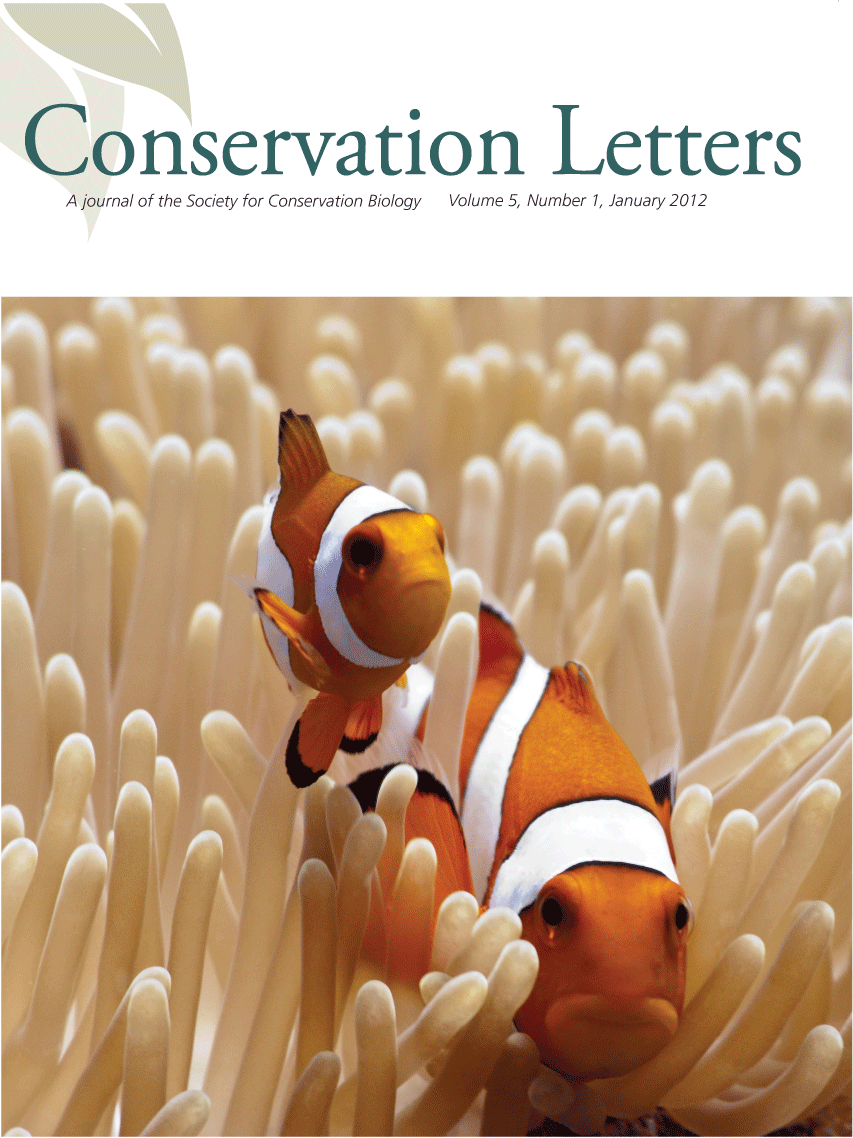Conservation Letters
"Our authors come from every continent, draw upon and frequently integrate the natural and social sciences, and publish novel scientific insights with often profound implications for conservation policy and practice."
- Conservation Letters Editorial, 2011
Five types of articles are published in Conservation Letters:
- Letters: novel findings with high relevance for practice or policy.
- Reviews: overviews of emerging subjects that merit urgent coverage or succinct syntheses of important topics that are rarely encountered in the mainstream literature.
- Policy Perspectives: brief essays for a general audience on issues related to conservation and society.
- Correspondence: articles provide readers an opportunity to raise substantive concerns regarding articles previously published in the journal.
- Viewpoint: articles are typically provided by the Editor-in-Chief, and aim to raise awareness and stimulate debate.
See the Author Guidelines for more information on the five types of articles published in Conservation Letters..
Submissions should be no more than 2500-3000 words and contain no more than 8 tables and/or figures.
Subscription Information: Conservation Letters is open access. All members of the Society for Conservation Biology receive a discounts to publish in the journal. Email SCB Membership at membership (at) conbio (dot) org to access the discount code. Please inlcude publishing discount code in your subject line.
Accessing Journal Content: SCB members can access Conservation Letters via their SCB member homepage or through the Conservation Letters page in the Wiley-Blackwell Online Library (enter your SCB username and password).
Please contact Wiley-Blackwell for questions about Conservation Letters and see the editors who make Conservation Letters all that it can be.
